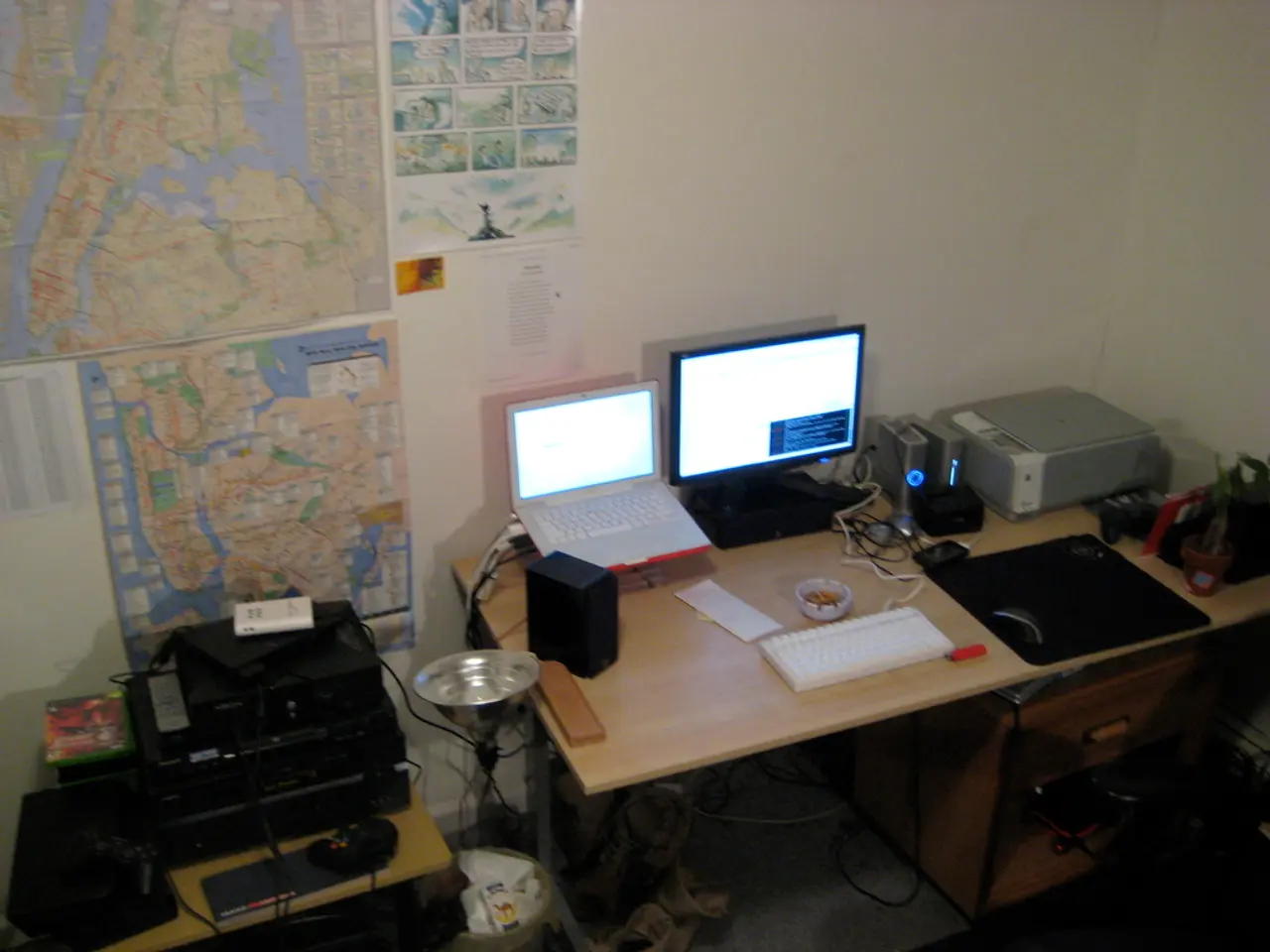Unearthing the Early Roots of Modern Technology: Tracing Back the Origin of Today's Digital Era in the 70s
In the 1970s, the world of technology was forever changed by the introduction of personal computers. This era marked the beginning of a new era in computing, one that would revolutionise various aspects of society, particularly in education and business.
The decade started with the launch of one of the first highly successful mass-produced microcomputers, the Apple II, in 1977. Its open design architecture promoted expansion and upgradeability, setting new standards for personal computing and establishing Apple as a leading company in the tech industry.
Prior to the Apple II, computers were large and primarily operated on vacuum tubes and transistors. However, the introduction of microprocessors in the early 1970s, such as the Intel 4004, revolutionised computing by making machines more compact and accessible. The Intel 4004, the first commercially available microprocessor, was developed by Intel in 1971.
The Altair 8800, released in 1975, was another significant milestone in the history of personal computing. This computer, which utilised the Intel 8080 microprocessor, emerged as one of the first commercially successful personal computers. The Altair 8800 inspired enthusiasm for personal computing and kickstarted the home computer market. It also led to the development of software, including Microsoft's first product, Altair BASIC.
The Altair 8800 attracted a wave of hobbyists eager to explore computing, and it sparked significant interest in home computing. By the late 1970s, hobbyist communities began exploring personal computing through software experimentation.
In business, computers streamlined operations, allowing smaller companies to compete effectively and improving productivity through software applications. The IBM System/360 family, a significant milestone in mainframe computing, played a crucial role in this transformation.
Computers in the 1970s were widely used in academia and industry for tasks ranging from data processing to scientific research. Early development of operating systems, such as UNIX, provided multi-user capabilities that streamlined workflows.
In education, computers transformed the learning landscape by introducing innovative learning tools and spurring interest in computer science. Programming languages like FORTRAN and COBOL gained popularity, enabling better software development. The Apple II's software library quickly expanded, supporting a variety of applications from education to business.
The PDP-11, developed by Digital Equipment Corporation, became renowned for its affordability and flexibility. It was a significant contributor to the growing popularity of personal computing.
In conclusion, the 1970s was a decade of significant changes in the world of technology. The introduction of personal computers, microprocessors, and affordable operating systems transformed various sectors, including education, business, and academia. These advancements paved the way for the tech-driven world we live in today.
Read also:
- Understanding Hemorrhagic Gastroenteritis: Key Facts
- Stopping Osteoporosis Treatment: Timeline Considerations
- Tobacco industry's suggested changes on a legislative modification are disregarded by health journalists
- Expanded Community Health Involvement by CK Birla Hospitals, Jaipur, Maintained Through Consistent Outreach Programs Across Rajasthan








